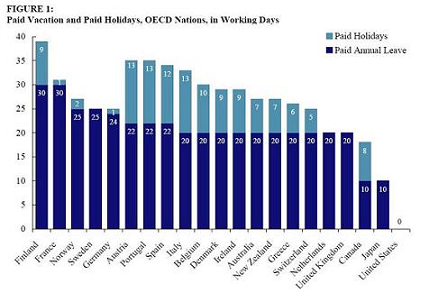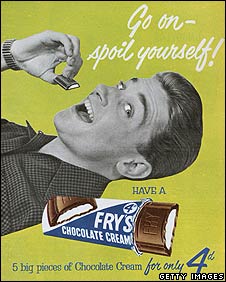Sociologists have noted that race and gender have been more politicized in the U.S. than class. In contrast, class is highly politicized in Europe, leading to a much stronger labor movement. The weak labor movement in the U.S. is partly to blame for the stingy federal policies around vacation and holidays. The U.S. federal government dictates that employees are given exactly zero paid holiday and vacation days a year (that means, if you get such things, it is because your employer is being generous/in a benefits arms race with other employers). This is in stark contrast to most other OECD countries:

Yep, that’s right. In every country included except Canada and Japan (and the U.S.), workers get at least 20 paid vacation days. In France and Finland, they get 30… an entire month off, paid, every year.
When I show figures like these (and there are many of them, parental leave, work hours, military spending, class inequality, etc) to my students, they are STUNNED. Most Americans are woefully ignorant of how pro-business U.S. policies are compared to the policies of like countries. I think this ignorance contributes to the resistance many Americans display when politicians and activists talk about improving protections for workers.
We’re a nation of people working harder and harder for less and less, and the merest suggestion that we should do anything other than work 9 hour days without pause until we drop dead is met with cries of socialism…
The quality of life of a typical American certainly suffers from our ignorance of life in other nations. If we were more aware of what a strong labor movement could offer, we might be more supportive of those movements.
I’ve always loved this bumper sticker:

Lisa Wade, PhD is an Associate Professor at Tulane University. She is the author of American Hookup, a book about college sexual culture; a textbook about gender; and a forthcoming introductory text: Terrible Magnificent Sociology. You can follow her on Twitter and Instagram.








